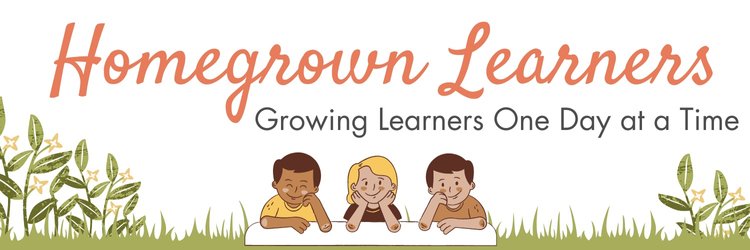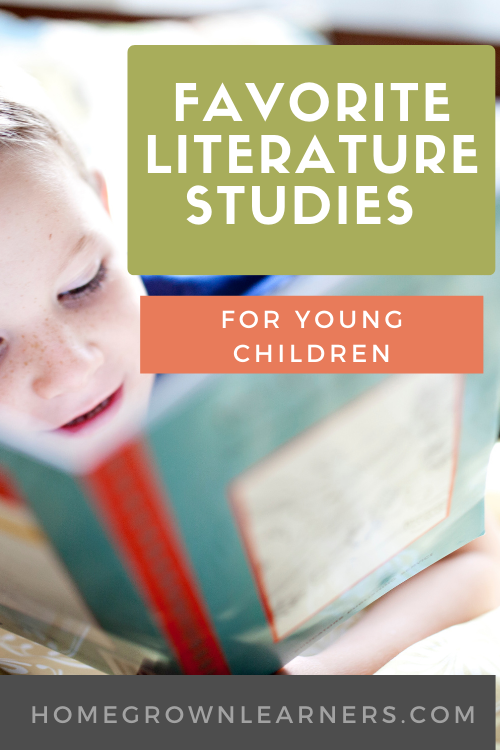My older boys have been on a reading bonanza over the last few months and my homeschooling teacher's heart could burst from happiness!
Recently they have plunged head-first into the world of graphic novels. Just this week we had to take two trips to the library to swap out their books for the remaining Dog Man and the last of The Bad Guys series.
Are these the examples of high-quality literature that I would pick out for my boys? Not exactly.
But honestly, I don’t mind at all because in the library check-out line their arms were also full of the Indian in the Cupboard, multiple books by Roald Dahl, Mr. Popper’s Penguins, and Flora & Ulysses.
Right now they are choosing to have well-rounded reading lives and I think a big part of that is due to the influence of ongoing quality literature studies.
Let’s Talk About A “Literature Study”
To be honest, the term “literature study” sounds kind of formidable. Boring. Like something that is going to take a lot of time, work, and planning.
I assure you that a literature study does not have to be any of those things and in my experience, my children look forward to them! I really try to keep ours simple but memorable.
My boys are ages 9, 7, and 5. While they love books, I keep each study short and sweet so they don’t lose interest.
Our studies always begin with me reading the book aloud, usually, while they are eating lunch or before bed, but always outside of our regular school day. Their only job is to sit back, enjoy the story, and absorb the beautiful language.
(You know you have selected a good one when they beg for just one more chapter!)
After we finish the book, I have taken a few different approaches on how to dig deeper.
Five Favorite Literature Studies
Charlotte’s Web
Much of our Charlotte’s Web study was inspired by the Brave Writer “Quiver of Arrows” curriculum (now called “Darts”). The Dart includes passages from the book to use for copy work and to teach short and sweet mini-lessons by examining the author’s words.
Through E. B. White’s first sentence we noticed the impact of a writer’s “opening hook” and marveled over how he nailed it with, “Where’s Papa going with that ax?”.
In another mini-lesson, I copied the passage onto big chart paper and my kids loved using colorful highlighter tape to identify examples of alliteration.
Can there even be a Charlotte’s Web study without watching the movie?!
Our movie watching conversation was full of incredulous outbursts of “That’s not what he said!” and “That’s not how it happened!” They LOVED pointing out when the movie got it wrong and the ways the book and movie were different!
Two of MY most memorable moments were not even planned events. One day I discovered that they had used their Lincoln Logs and Little People figures to recreate the Arable’s Farm complete with Lurvy, Mr. Arable, Fern, the barn, and pig pen with Wilbur in the mud!
Another day, all three of them came running up to me, screaming that I had to come with them right this
second! They pulled me outside to show me a spider web full of sparkling dewdrops that looked like jewels, just like Charlotte’s!
The Mouse and the Motorcycle
Our Mouse and the Motorcycle study was another one mostly inspired by a Brave Writer Dart.
This time the curriculum guided us to pay close attention to dialogue and quotation marks. I wrote the passage on chart paper and we took turns reading it aloud and using our hands to make Pac Man mouths.
When someone was speaking we would make our hands “talk” but when the dialogue ended, we made our hands still and “quiet”. They also used the highlighter tape again to identify proper nouns. These lessons are a great way to make so many connections between our reading and writing lives.
After the study, I cut a mouse hole shape out of black construction paper and taped it to the bottom of a wall in our main hallway, and labeled it “Ralph’s House.” My boys were beyond excited when they discovered it and are still so excited to show people when they come over to our house!
Fairy Tales
I highly recommend a fairy tale study for all ages but our family has especially enjoyed it because even my youngest can fully participate. This project came from another Brave Writer curriculum, Jot It Down.
We started with Rapunzel and we read the original version by the Brother’s Grimm several times over a few days.
Next, my older boys used their retelling skills to write down the story with as much detail as they could from memory. My 5 year old retold the story to me while I recorded his words. After this, each child made his own visual representation of the story. For Rapunzel, I gave them yellow yarn for her hair and construction
paper to create her tower.
After this, each child made his own visual representation of the story. For Rapunzel, I gave them yellow yarn for her hair and construction paper to create her tower.
So far we have also explored The Frog Prince and Goldilocks and the Three Bears, and I have plans to keep going with several more.
For each tale that we cover, the boys are writing a retelling of the story in their own words, creating a visual representation using different materials, and last we will put them all together to create a book.
Fairy Tales are great for teaching about “the rule of 3,” good versus evil, and great vocabulary. My middle son told my oldest son to “stop being so foolhardy” one day while they were playing. He definitely learned that from one of our fairy tales!
There are so many different versions of the original fairy tale classics, some even in comic book style! We have checked out countless books from the library like The Stinky Cheese Man and Goldilocks and the Three Hares.
There are also different versions of fairy tales from other countries and cultures like Leola and the Honeybears an African American retelling of Goldilocks and the Three Bears and Rapunzel by Rachel Isadora where Rapunzel has dreadlocks and lives in Africa.
The Cricket in Times Square
My boys fell in love with the characters in The Cricket in Times Square! My oldest couldn’t wait to read the sequel, Tucker’s Countryside, and he loved finding out what the animals got into after our study ended.
(There was a Brave Writer Arrow on this book but it is no longer available in their store.) One of our lessons focused on powerful sound words using a passage describing the Times Square Subway Station. I pulled up a video on YouTube of the subway station in action and we watched the Times Square Webcam so that they could see the Jumbotrons, bright lights, news tickers, and billboards.
I also showed them pictures of what a newsstand looked like during Mario’s time and compared it to the newsstands of today. We had excellent conversations about how much our news sources have changed over time and why.
George Selden’s words gave us great examples of similes and onomatopoeia and inspired us to create charts that we can continue to add on to as we find more. The boys are so proud to bring a book that they are reading to me and point out a simile or example of onomatopoeia that they have discovered.
The Bears on Hemlock Mountain
The Bears on Hemlock Mountain is our current study and one that we are doing a little differently. I found wonderful Study Guides from Progeny Press for many books on all grade levels.
I like that the guide is divided into sections that cover a couple of chapters at a time. Instead of reading the entire book before we begin the study, we have been working through the provided vocabulary work and open-ended discussion questions after we read the specified chapters.
The guide provides lots of opportunities for writing but our homeschool days already include quite a bit of writing so I have opted to use the study to guide our discussion and use the vocabulary practice to sharpen their dictionary skills by looking up the words.
The main character, Jonathon, often mentions feeding and watching the animals of the forest. We have hung a bird feeder right outside our living room window and my oldest son has taken ownership in making sure it is full. Our entire family has had all kinds of entertainment watching the antics of the squirrels trying to get into the feeder and the boys enjoy reporting what new bird visitors we have each day.
We were also lucky enough to witness a visit by a red-headed woodpecker that we have only ever seen from way in the top of a very tall tree in our neighbor’s yard.
Jonathon’s mom makes cookies several times in the book. Once we are finished reading, we are going to make our own cookies, and also on our agenda is to go on a nature walk and see how many animal tracks we can find to identify.
The right books can be such useful and valuable tools to expand our children’s vocabulary, promote empathy in life situations, teach about cultures different from our own, and give an understanding of historical periods that facts alone just can’t convey.
Here list of the books/movies that were mentioned in the post:
CHARLOTTES WEB : 60TH ANNIVERSARY EDCharlotte's Web (2006)Charlotte's Web (1973)The Mouse and the MotorcycleThe Complete Fairy Tales of the Brothers Grimm All-New Third EditionThe Stinky Cheese Man and Other Fairly Stupid TalesGoldilocks and the Three HaresLeola and the Honeybears (hc)RapunzelCricket in Times Square (08) by Selden, George [Paperback (2008)]Tucker's Countryside (Chester Cricket and His Friends, 2)The Bears on Hemlock Mountain (Ready-For-Chapters) by Alice Dalgliesh (1-Dec-1992) Paperback















![Cricket in Times Square (08) by Selden, George [Paperback (2008)]](https://m.media-amazon.com/images/I/31HfUtdD+CL._SL500_.jpg)








![Crampton Hodnet [CRAMPTON HODNET]](https://m.media-amazon.com/images/I/41ZBFFmv1vL._SL500_.jpg)





